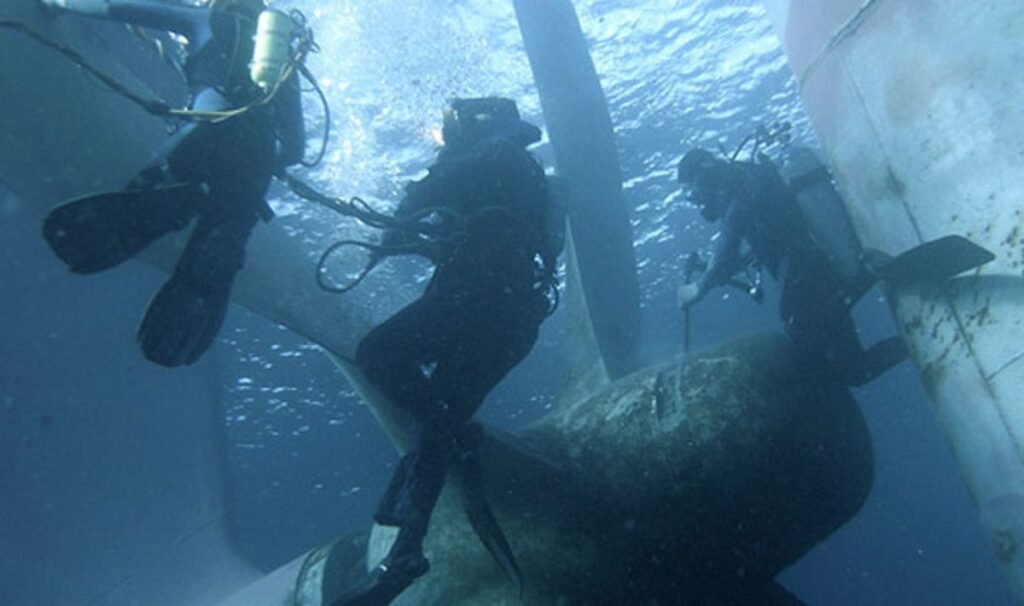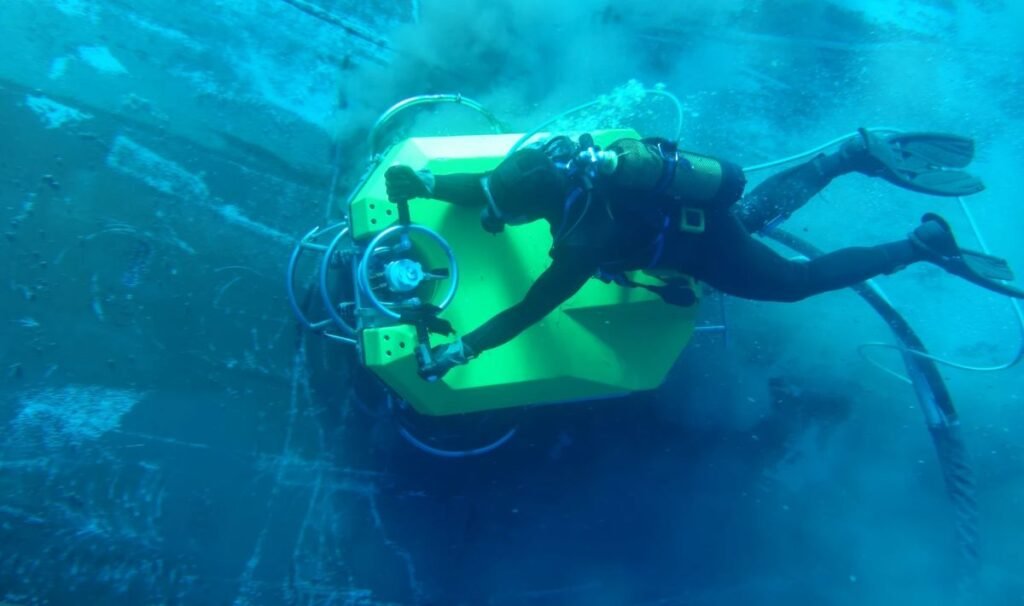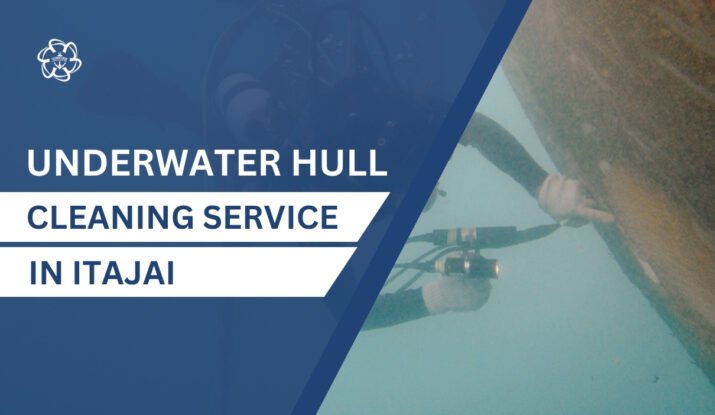Picture this: your vessel gliding effortlessly through the busy, beautiful waters of Itajai, a coastal Brazilian city where ships of all sizes are a part of daily life. But, beneath the surface, an invisible battle is raging. Over time, marine growth (those stubborn barnacles, algae, and sea creatures) can latch onto your hull, quietly sabotaging your ship’s speed and fuel efficiency. That’s where underwater hull cleaning in Itajai steps in, transforming your vessel from sluggish to streamlined, all while helping you save money and protect the sea.
What Is Underwater Hull Cleaning Itajai?
Underwater hull cleaning in Itajai is the process of removing unwanted marine growth from your vessel’s submerged surfaces, including the hull, propeller, and other underwater structures. Certified divers or advanced robots work beneath the waves to gently (but effectively) restore your ship’s performance. The work is done in the water, so you avoid the massive costs and downtime associated with dry-docking.
Why Matters Regular Underwater Hull Cleaning in Itajai
Itajai’s subtropical climate and river-fed port mean marine organisms grow fast and thick. Ships that skip routine cleaning quickly fall prey to heavy biofouling, risking higher operating costs, environmental fines, and even engine troubles from clogged intakes or overworked machinery. For local shipping companies, traders, and visiting global fleets, underwater hull cleaning in Itajai is not just a good practice—it’s business-critical.

How Biofouling Impacts Your Vessel’s Efficiency
Marine fouling might look harmless, but it’s deceptively destructive. Here’s how:
- Increased drag: Growth acts like underwater sandpaper, making your vessel work harder and burn more fuel.
- Loss of speed: Even a thin film of slime can slow your ship and bump your fuel costs by 10% or more.
- Frequent breakdowns: Excessive fouling can clog intake systems and overheat engines.
- Higher emissions: Poor efficiency means a bigger carbon footprint, which is problematic in today’s eco-conscious shipping world.
- Regulatory risk: Itajai, like other Brazilian ports, is increasingly strict about invasive species and environmental impact.
The Process of Underwater Hull Cleaning in Itajai
Let’s dive into the steps that make underwater hull cleaning in Itajai both efficient and effective:
Initial Underwater Inspection
Every good cleaning starts with a thorough underwater assessment. Divers or ROVs use underwater cameras to check for:
- Biofouling type and severity
- Condition of anti-fouling coatings
- Obvious damage, corrosion, or repairs needed
Manual Cleaning: Divers & Scrapers
For localized or delicate areas—like intakes, around propellers, or niche spots—a skilled diver with brushes and scrapers is still the gold standard. Divers maneuver with precision, removing growth without stripping the crucial protective paint.
Mechanical & Robotic Cleaning of Underwater Hull Cleaning in Itajai
On larger, flat surfaces, mechanical brush karts and even robotic hull cleaners come into play. These machines, often operated by divers or remotely, deploy rotating brushes, scrub marine growth vigorously, and, in some modern systems, vacuum up debris for safe hatch recovery or disposal.
Modern Technology: Brush Karts, Robots, and More
Hull cleaning once meant tedious handwork, but Itajai now benefits from the latest hull-cleaning innovations:
- Brush Karts: Industrial-strength machines that use hydraulics to power multiple brushes, covering large areas far faster than manual cleaning could.
- Magnetic Robot Crawlers: These high-tech “Roombas of the sea” autonomously scrub hulls, guided by operators from the deck. Some models feature real-time video feeds, pressure-sensing brushes, and debris collection for elite eco-conscious performance.
- High-Pressure Water Blasters: Used for some tough barnacles, but always with care not to strip anti-fouling paint—technology and operator skill both matter.
Robotic hull cleaning is surging in popularity as these systems boost safety, consistency, and eco-friendliness, key in Brazilian ports where environmental compliance is essential.
Environmental and Safety Considerations of Underwater Hull Cleaning in Itajai
Brazil is getting serious about protecting its marine habitats—and so is Itajaí. The best hull cleaning providers:
- Use environmentally friendly techniques that minimize paint damage and prevent the release of invasive species
- Employ vacuum recovery systems to capture marine debris and filter water before returning it to the sea
- Adhere to both international and Brazilian regulations regarding aquatic invasive species (AIS) and overall environmental impact, including guidelines set by the International Maritime Organization (IMO)
Safety is a top priority, too. Only trained, certified divers should operate in the water, and all equipment is rigorously inspected and maintained for safe operation, even during deep dives up to 50 meters.
Choosing the Best Service of Underwater Hull Cleaning in Itajai
With Itajai’s booming port activity, every minute counts—so picking the right service matters.
Credentials, Compliance & Local Knowledge
Look for:
- Certified, insured professionals with proven experience in Brazilian waters.
- Knowledge of Itajai’s specific regulations regarding hull fouling, AIS, and protected marine zones.
- Inspections and reporting—before, during, and after every job.
- Technical ability with all major cleaning technologies, from brushes to robots.
Reputable services in Brazil, such as those at Porto de Santos, set the benchmark for excellence, combining compliance, efficiency, and eco-conscious practices tailored to local conditions.
What Sets Elite Providers Apart?
- Use of robotic and debris-recovery tech, minimizing pollution and cleaning faster than manual-only services.
- Daily inspection reports, before-and-after visuals, and clear documentation for compliance.
- Rapid mobilization, with emergency cleaning available—even on short port layovers.
How Often Should You Schedule Underwater Hull Cleaning in Itajai?
In Itajai’s fast-fouling port, experts recommend underwater hull cleaning in Itajai every 3–6 months. High-activity vessels, or those in port often, should check hulls even more frequently. Watch for signs like:
- Rising fuel use
- Slower speeds
- Overheating engines
Regular cleaning keeps you ahead—saving fuel today, avoiding expensive repairs tomorrow.
Costs and Value of Underwater Hull Cleaning in Itajai
Prices depend on several factors:
- Vessel size and type: Large bulkers or tankers cost more to clean than small workboats.
- Fouling severity: Heavy barnacles mean more hours (and higher prices).
- Tech used: Robotic and debris-capture systems may cost more upfront, but save on compliance and eco fees.
- Urgency: Emergency cleanings or late-notice calls may carry premium rates.
Think of hull cleaning as an investment, not an expense. Every dollar spent slashing friction and fuel waste comes back in saved operational costs and less environmental risk.
DIY vs. Professional Underwater Hull Cleaning in Itajai—What’s Best?
DIY might seem tempting, but cleaning a hull is no weekend project. Without commercial training, gear, and insurance, you risk:
- Damaging anti-fouling coatings (voiding warranties)
- Failing to fully remove tough growth
- Legal trouble if waste is released in restricted waters
Professional crews bring advanced tools, deep expertise, and regulatory knowledge. The result? More thorough cleans, zero regulatory nightmares, and peace of mind.

Innovations & The Future of Hull Maintenance
Hull maintenance is racing ahead:
- AI-driven cleaning robots are arriving in Itajai, offering predictive scheduling and “smart cleaning” that learns your vessel’s needs.
- Filtration and water-quality sensors ensure zero environmental shortcuts.
- Digital inspection reports with instant video and compliance history.
Tomorrow’s hull cleaning will be faster, greener, and more data-driven—perfect for Itajai’s ambitious, eco-savvy fleets.
Conclusion: Keep Your Vessel—and Itajai’s Waters—Pristine
Underwater hull cleaning in Itajai is your secret weapon against unnecessary fuel bills, sluggish performance, and regulatory headaches. By choosing expert, certified crews using the latest tech, you keep your ship (and the waters it sails) in peak condition. Save money, boost efficiency, and contribute to a cleaner coastline—every time your hull gets a proper scrub.
FAQ:
Q1. How often should I schedule underwater hull cleaning in Itajai?
Most ships benefit from cleaning every 3–6 months, but highly active vessels may need more frequent attention due to fast biofouling in local waters.
Q2. Is underwater hull cleaning in Itajai environmentally safe?
When performed by certified professionals using modern, debris-recovery equipment and adhering to strict regulations, the process is safe and protects local marine life.
Q3. What advanced technologies are used in underwater hull cleaning in Itajai?
Itajai’s leading providers use hydraulic brush karts, magnetic robot crawlers, AI-powered systems, and vacuum filtration technology for thorough, eco-friendly hull cleaning.
Q4. What are the signs that my vessel needs hull cleaning?
Look for spikes in fuel consumption, slower sailing speeds, engine overheating, or visible marine growth during inspection dives.
Q5. Can I clean my ship’s hull myself?
DIY attempts risk damaging coatings, missing tough growth, and breaking environmental laws. Professional services in Itajai guarantee a proper, compliant, and safe result every time.


